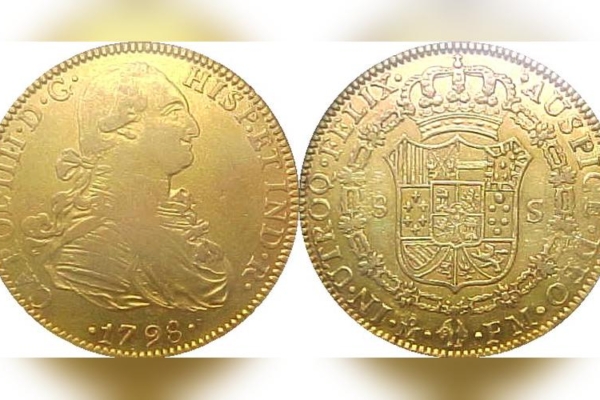Off the coast of Colombia, the sunken wreck of a ship from over 300 years ago has once again brought astonishing discoveries to light—several exquisitely designed gold coins. Researchers have confirmed that these coins likely originate from the legendary “San José Galleon.” This Spanish treasure ship, often referred to as the “Holy Grail” of sunken ships, is believed to have been carrying treasures worth billions of dollars when it met its demise.
According to a study published this Tuesday (June 10) in the academic journal “Antiquity,” scientists analyzed a large number of high-resolution photographs of the gold coins taken around the sunken ship. The study indicates that the patterns, mint marks, and dates on the coins suggest they were minted in 1707 in Lima, Peru, matching the documented origin of the treasures from the “San José Galleon.”
The images of these gold coins were captured by a team composed of Colombian Navy and archaeologists using deep-sea remotely operated vehicles. The shipwreck lies about 2,000 feet (approximately 600 meters) below the surface, with dozens of gold coins scattered across the seabed. Due to the unstable terrain, the total count is difficult to ascertain, but image analysis shows that each coin has an average diameter of around 32.5 millimeters and weighs about 27 grams (approximately one ounce).
Researchers point out that the obverse of the coins bears the “Jerusalem Cross with the Quartered Shield of Castile and León” of the Kingdom of Castile and León, with a dotted border, while the reverse features the “Crowned Pillars of Hercules” rising above the waves. The “L” symbol on the coin signifies the mint code for Lima, the “8” represents the highest denomination at the time, the “H” is the mark of the chief assayer for 1707, Francisco de Hurtado, and the “707” denotes the minting year.
The characteristics of these coins align closely with historical records, enabling the research team to further determine that the ship sank in 1708, allowing for speculation on its route and sinking location, further supporting its identity as the “San José Galleon.”
The “San José Galleon” was part of the Spanish treasure fleet in the early 18th century and sank on June 7, 1708, off the coast of Cartagena during its return journey after being attacked by the British Navy, resulting in the deaths of approximately 600 crew members. It is said that the ship was laden with around 200 tons of gold, emeralds, and other treasures.
As early as 2022, the Colombian government dispatched unmanned submersibles to investigate, which led to the discovery of artifacts such as anchors, pottery, and glass bottles. Officials have stated that further salvage efforts will be conducted using multiple submersibles. Since its discovery in 2015, the exact coordinates of the shipwreck have been kept confidential to prevent looting.
Ownership of the “San José Galleon” has been the subject of controversy for many years. Apart from Colombia and Spain, the indigenous Qhara Qhara people of Bolivia also claim ownership of the treasures aboard the ship as ancestral heritage. Additionally, the American salvage company Sea Search Armada asserts that they found the ship over forty years ago and have made claims to its contents.
There are disputes regarding the cause of the ship’s sinking as well. While the Colombian government cites British documents claiming that the “San José Galleon” did not explode and sink, Spanish documents suggest that the treasure ship was hit and exploded during a battle.
In May 2024, the Colombian government designated the shipwreck site as a “protected archaeological zone,” safeguarding it as a national heritage site for preservation and further research.
(This article references reports from CBS and Fox News)

